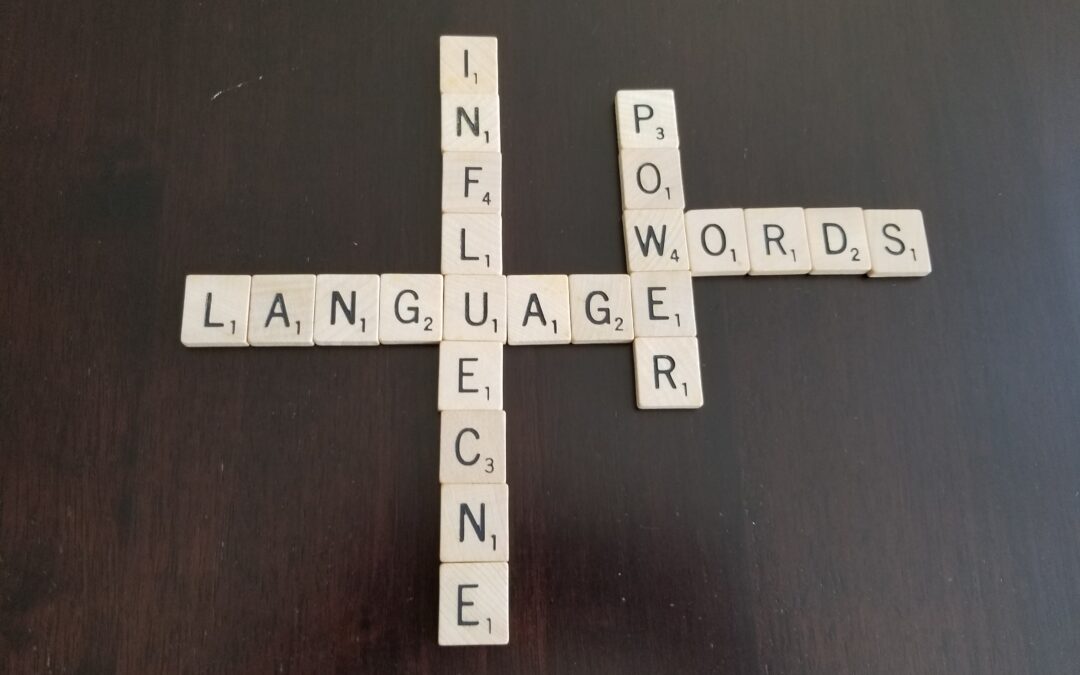Writers, teachers, journalists, librarians, avid readers, and politicians are all well aware that language, written or spoken, has power. Whether it’s a simple fact or a complex concept, the words used to share it have an effect on how it is understood and interpreted.
Science is written to be objective, neutral, and impartial. Traditionally, it is the language of observation. Thus, science writing has relied heavily on the passive voice – observations from a distance. I explored this concept in a previous blog post (Is Passive Voice Passé?), with several examples of active voice and passive voice. Today, active voice is encouraged in science writing, as science has moved to studying the results of an intervention that is performed by the researcher. In science writing, the use of adverbs and adjectives is generally limited to words that convey objective assessments. Words that introduce emotion or bias and may influence the direction of the reader’s thinking are discouraged. The reader is expected to draw their own conclusions based on impartial facts.
However, even when using an impartial writing style, an idea or fact can be presented in multiple ways that influence the reader’s perception of the take-away message. The differences in words or tone are often subtle. In a simple example I like to share with clients, consider these two signs in a park. Both signs share essentially the same message, but the tone is very different.

The founding principle of journalism is also to report the facts in an impartial and impersonal manner. Thus journalists may rely on passive voice and limit the use of adverbs, adjectives, and modifiers that introduce bias and emotion. But each media outlet has an editorial viewpoint, an inherent bias as to what is good or bad, what is acceptable or unacceptable. And their mandate is to shape and influence how the reader/viewer actually sees and interprets the story, to be in line with the editorial bias of the media outlet. This becomes apparent in the language they use.
Today more than ever, the media’s power to broadcast, and influence, is controlled by advertising revenue, thus the language of stories often becomes emotional and sensational, to lure in the viewer/reader and increase revenues. Watch or read the same story as reported by several different media outlets, and you’ll see differences in which facts are emphasized or even reported, how the individuals in the story are described, and the kinds of qualifiers used in the story – do they evoke different emotions?
The original intent behind the use of passive voice in journalism when reporting crimes and acts of violence may be two-fold: (1) to indicate impartiality and neutrality, as discussed above, and (2) for legal reasons, to avoid having to say “allegedly” repeatedly, as the perpetrator has not yet been found legally guilty of the act at the time of the story. Unfortunately (see, I’m showing my bias here), in passive voice, there is no action, there are no actors, and there is no accountability. Use of passive voice puts the focus on the victim and makes the victim the subject of the story, rather than putting the focus on the perpetrator and the act. In passive voice, when the perpetrator is mentioned at the end of a sentence, the brain is less likely to register it as being important. Passive voice distances the doer from the action. Sometimes the perpetrator is not even mentioned. In contrast, active voice takes ownership – someone did something.
The following examples are actual headlines:
Headline: “A photographer was shot in the eye.” (Passive voice)
Versus: “Police apparently shot photographer in the eye.” (Active voice)
Headline: “Pedestrian struck by car and killed in St. Paul.” (Passive voice)
Versus: “Man driving on wrong side of road struck and killed pedestrian.” (Active voice)
Headline: “Girl was raped by 100 men before she was 16.” (Passive voice)
Versus: “One hundred men raped girl before she was 16.” (Active voice)
Headline: “Protestors struck a journalist with his own microphone.” (Active voice)
Versus: “Journalist was struck with his own microphone by protestors.” (Passive voice)
Which version stirs more emotions? Which person is emphasized in each of these examples? If the media want to downplay the importance of (or perhaps sympathize with?) the perpetrator, and perhaps want to downplay the horror of the act, they’ll use a passive voice headline. Or perhaps they are subtly shifting the blame to the victim – why was the victim at that place at the time? When the media want to emphasize the perpetrator and influence the reader to think of that person as “bad” – or, in a positive story, as a “hero” – they’ll choose an active voice headline.
As we’ve seen often recently, such distortions in reporting of events (again, see how I show my bias here?) are particularly common in headlines and stories around racism, sexual assault, protests, and violence.
Yes, language has the power to impart emotion, influence the reader, and demonstrate bias. It’s time to pay more attention to HOW a story is being told, not just the story that is told.
I welcome your comments, as well as suggestions for future weekly writing tips.


Recent Comments